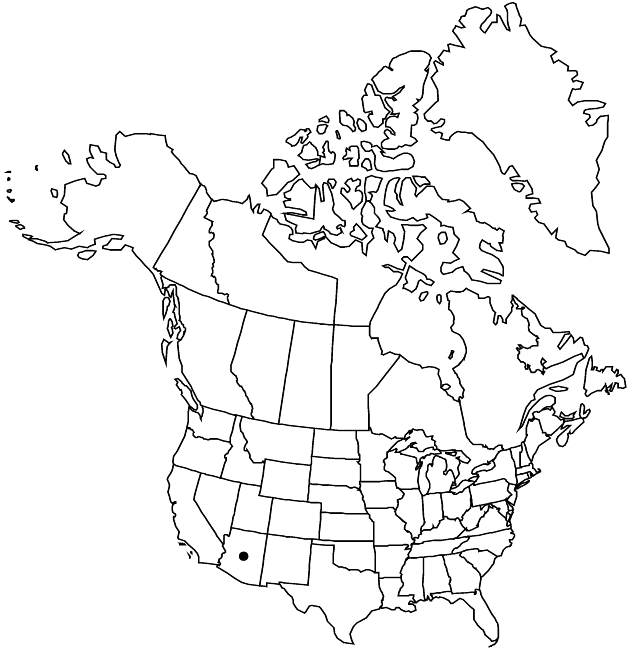Difference between revisions of "Senecio arizonicus"
Bull. Torrey Bot. Club 10: 87. 1883.
FNA>Volume Importer |
FNA>Volume Importer |
||
| Line 23: | Line 23: | ||
|elevation=1600–2100 m | |elevation=1600–2100 m | ||
|distribution=Ariz. | |distribution=Ariz. | ||
| − | |discussion=<p>Senecio arizonicus is reputedly in southern New Mexico (W. C. Martin and C. R. Hutchins 1980); that seems unlikely and should be checked.</p> | + | |discussion=<p><i>Senecio arizonicus</i> is reputedly in southern New Mexico (W. C. Martin and C. R. Hutchins 1980); that seems unlikely and should be checked.</p> |
|tables= | |tables= | ||
|references= | |references= | ||
| Line 47: | Line 47: | ||
|publication year=1883 | |publication year=1883 | ||
|special status= | |special status= | ||
| − | |source xml=https://jpend@bitbucket.org/aafc-mbb/fna-data-curation.git/src/ | + | |source xml=https://jpend@bitbucket.org/aafc-mbb/fna-data-curation.git/src/8f726806613d60c220dc4493de13607dd3150896/coarse_grained_fna_xml/V19-20-21/V20_1227.xml |
|tribe=Asteraceae tribe Senecioneae | |tribe=Asteraceae tribe Senecioneae | ||
|genus=Senecio | |genus=Senecio | ||
Revision as of 15:18, 18 September 2019
Perennials, (20–)30–40(–60) cm (rhizomes suberect or weakly spreading). Herbage lanate-arachnose or tomentose, unevenly glabrescent. Stems 1(–2). Leaves (often purplish abaxially) reduced distally; petiolate; blades ovate to subelliptic, (5–)6–10(–15) × (2.5–)3–5(–9) cm, bases tapered or contracted, margins subentire to denticulate (denticles callous; mid and distal leaves bractlike). Heads (2–)5–12(–20) in corymbiform arrays. Calyculi of 2–5+ bractlets (largest to 3 mm). Phyllaries (± 13) ± 21, 5–7 mm, tips green. Ray florets ± 13; corolla laminae 5–10 mm. Cypselae hairy (especially on angles). 2n = 40.
Phenology: Flowering late spring–summer.
Habitat: Openings in pine-oak woodlands
Elevation: 1600–2100 m
Discussion
Senecio arizonicus is reputedly in southern New Mexico (W. C. Martin and C. R. Hutchins 1980); that seems unlikely and should be checked.
Selected References
None.
